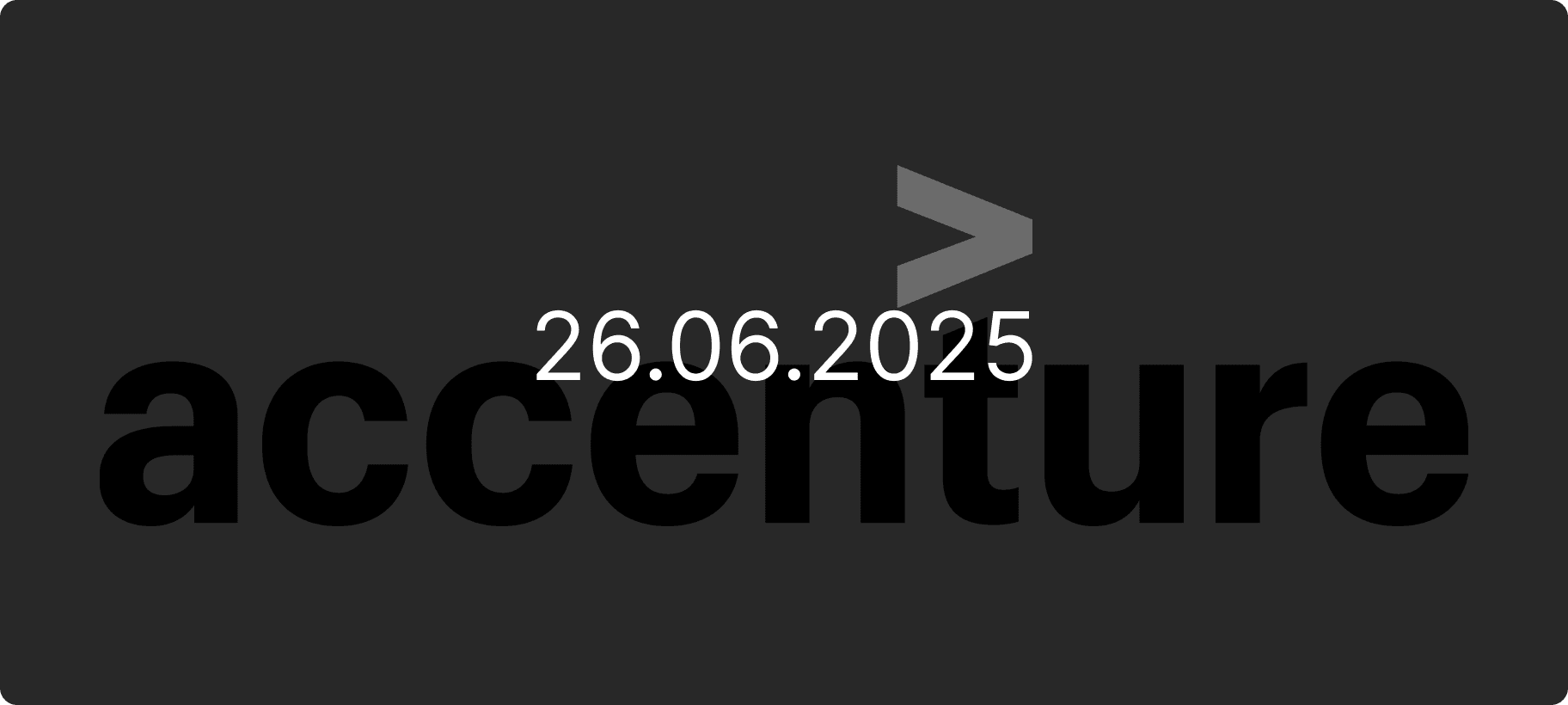The Weekly Adjerian Bulletin Ep.13

Reinvention at Scale: What Accenture’s AI-Driven Overhaul Signals, and Why It Matters for Smaller Firms
Over the last week one of the industry’s largest players quietly redrew its own map. On 20 June, Accenture announced that, effective 1 September 2025, it will fold its five global service lines - Strategy, Consulting, Song, Technology, and Operations - into a single integrated unit dubbed Reinvention Services. The new business will be run by Manish Sharma, currently CEO of the Americas, who steps into the freshly minted role of Chief Services Officer. Accenter CEO Julie Sweet framed the move in starkly simple terms: clients “need more value faster,” and combining every discipline under one P&L is how Accenture plans to deliver that value in the age of generative AI.
It is the firm’s biggest structural change since 2020. And it arrives at a delicate moment. Accenture’s latest earnings showed revenue climbing to $17.7 billion, up 8 percent year-on-year, yet new bookings sank 6 percent and investors knocked almost seven percent off the share price in a single day. CEOs, wary of macro-shocks and election-year turbulence, are postponing smaller advisory projects while green-lighting transformative, AI-heavy programs. Accenture, sitting on nearly 800,000 employees, is responding by turning its own complexity inside-out: fewer internal seams, faster cross-domain delivery, and a brand narrative, reinvention, that points squarely at AI as the organising principle.
The company is not hiding what “reinvention” looks like. Sweet rattled off examples on her earnings call: an AI-powered ship for Fincantieri that predicts maintenance and optimises energy in real time; AI-generated 3-D avatars that shrink creative cycles for Nestlé’s coffee brands; a data-driven reboot of Bel’s cheese manufacturing line; and an environmental-permit accelerator for Brazilian miner Vale. Each story folds strategy, design, tech, and operations into one outcome, exactly what the new unit is supposed to institutionalise.
For many boutiques, the headline might feel distant, “That’s Big-Four stuff.” But dig deeper and Accenture’s pivot is a loud signal about where mid-market demand is drifting and how smaller firms can ride the same current without mimicking the scale.
What Smaller Firms Can Learn from a Giant’s Reinvention
- Sell the Outcome, Not the Org Chart. Accenture is making its org invisible to buyers; the offer is reinvention, full stop. Boutique firms can do the same on a smaller canvas—package strategy, enablement, and rollout as a single promise instead of three line items.
- Name the Transformation. “Reinvention Services” is brand language that reframes consulting as something future-tensed and AI-native. A well-chosen label can elevate a small firm’s pitch far beyond “digital transformation” clichés, and it travels fast on LinkedIn.
- Lead with AI-Infused Proof Points. Notice that every example Sweet cited carries a tangible, almost cinematic outcome: a self-talking ship, a self-optimising factory. Smaller consultancies can craft similar micro-stories - AI-driven cash-flow forecasts, auto-tagged legal documents, zero-touch marketing workflows - that live in a two-paragraph case study and do the selling for them.
- Shorten the Distance from Idea to Impact. Accenture’s reorg is about speed: one contract, one integrated team, faster deployment. Boutiques can compete by creating rapid-value sprints; 30-day pilots that ship code or dashboards, not decks. The point is the same: compress the timeline between engagement and evidence.
- Hedge Against Booking Volatility. A 6 percent dip at Accenture is a reminder that even giants can wobble when discretionary projects stall. Smaller firms can build resilience now by diversifying revenue with retainers, fractional roles, or productised tools that cushion quarter-to-quarter swings.
Putting It into Practice
Accenture’s play is about scale, but the logic adapts elegantly to a ten-person shop. Audit your last six wins. Where did you already span strategy through execution? Where did AI sneak into the deliverable? Wrap those elements into a fixed-fee, scenario-based offer. Give it a name that tells prospects exactly what future state they’re buying. Then publish a two-minute Loom demo, a public Notion checklist, or a live metric to prove it works.
In other words, don’t copy the “bigness,” copy the clarity. Your clients won’t care how many service lines you merge; they will care that from day one you look like the simplest, fastest path to a visible result.
Looking to improve your consulting firm with smarter delivery and built-in automation?
Adjera helps smaller teams work smarter with built-in automation and streamlined project delivery. Deliver faster, stay client-focused, and scale without the overhead.
Book a call today or request access if you want to learn more about how we might be able to help your team. The first consultation is absolutely FREE of charge, and is only meant to help you shed light on where your firm could improve.